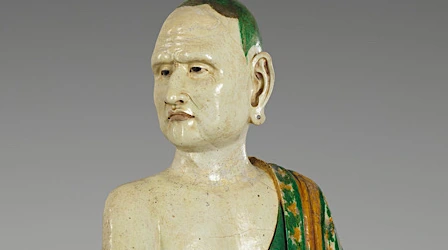Ekottarika Āgama
Subscribe to this topic via: RSS
Taishō 125 (增壹阿含經 Zēngyī Āhán Jīng), roughly parallel to the Aṅguttara Nikāya of Southeast Asia, contains early (as well as some late) sūtras of the Dharmaguptakas preserved in Chinese translation.
Table of Contents
Books (3)
-
… revised versions of previously published articles. Each study builds around a partial or complete translation of an Ekottarika-āgama discourse, followed by an examination of aspects that I felt to be of further interest.
-
I will consider the Zengyi ahan jing chiefly as the product of historical actors, three-dimensional human beings engaging their own world, rather than the putative witness to some ill-defined sectarian tradition
-
The integration of later elements into the Ekottarika-āgama, often related to Mahāyāna thought, distinctly distinguishes it from the other Chinese Āgamas as well as their counterparts, the Pali Nikāyas. When, where, how and why did this early Buddhist collection and its translation undergo such striking transformations?
Readings (18)
Featured:
-
The translation of the twin Maitreya texts appears to have been produced as part of the Ekottarika-āgama’s translation.
-
These two collections include many suttas addressed to Buddhists dealing with the ethical and spiritual concerns of life within the world (as noted by Bhikkhu Bodhi), and thus involves the issues of merit (puñña). In this study I have illustrated the significant but often underestimated position of compassion with merit in early Buddhist doctrine.
-
On the basis of a large set of diverse stylistic markers, this paper argues that the Ekottarikāgama T 125 was translated by Zhu Fonian, and not by Saṃghadeva. The paper also considers implications of its findings for the broader corpus of texts ascribed to Zhu Fonian, and for methods in assessing ascriptions of Chinese Buddhist texts on the basis of internal evidence.
-
… the Ekottarika Āgama could be affiliated to the Mahāsāṃghikas or the Mūlasarvāstivādins.
-
… the EĀ contains numerous salient features of Mahāsāṃghika doctrine, particularly the transcendence of Buddhas and Bodhisattvas. This study also argues that the seeming affinity between several legends in the EĀ and those in the Mūlasarvāstivāda Vinaya is likely to have resulted from Mahāsāṃghika influence on the Mūlasarvāstivādins.
28 pages -
… some groups of suttas in the Aṅguttara Nikāya with saṃyutta-like nature were probably moved from the Saṃyutta Nikāya to the Aṅguttara Nikāya within the Pali tradition. Evidence of a comparable movement into the Ekottarika Āgama is also available.
-
How could suffering affect
The man whose mind is thus cultivated And which, like a rock,
Stands unmoving,
Detached from pleasant things -
… avoid assuming too easily that an abbreviation without a marker has occurred
-
… a somewhat ambivalent formulation that suggests a possible relation to the notion of rebirth in the Pure Abodes
-
… besides numerous incontestably very late elements, it also contains many other extremely ancient elements
See also:
